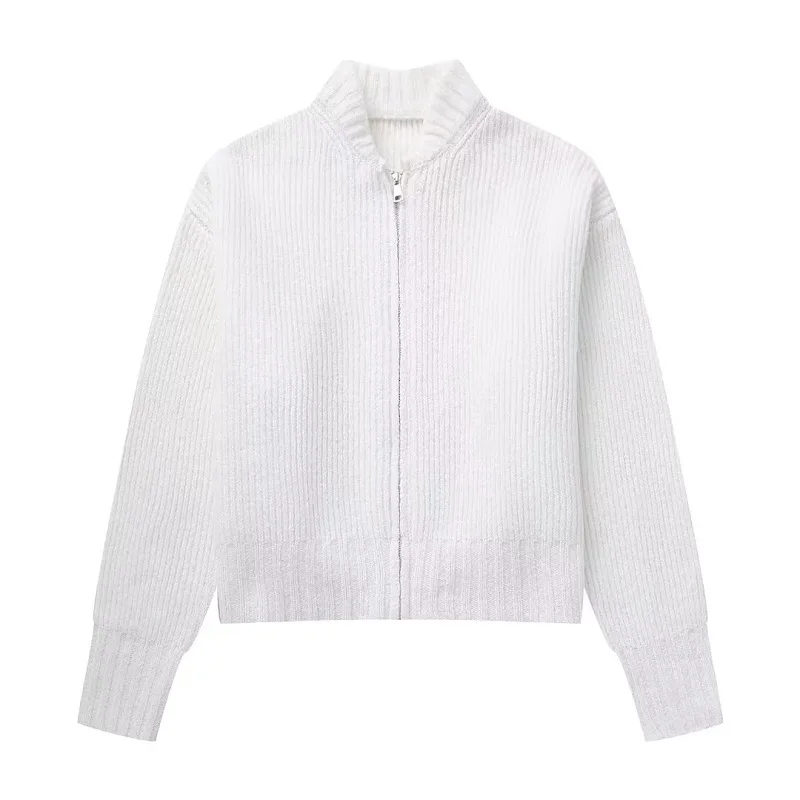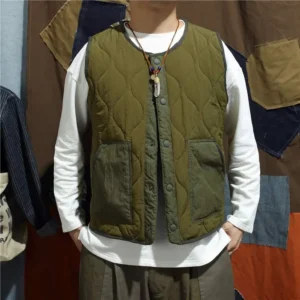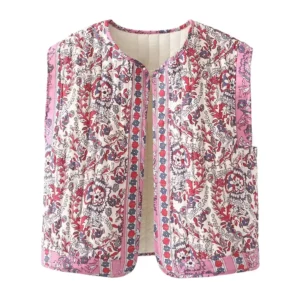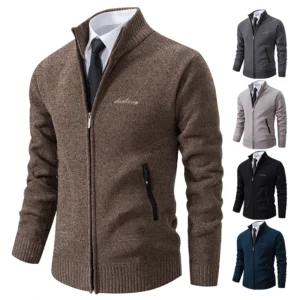Understanding Eco-Friendly Cashmere: The Foundation of Sustainable Luxury
In today’s conscious marketplace, eco-friendly cashmere represents the perfect harmony between luxury and responsibility. True sustainable cashmere encompasses multiple dimensions: responsible farming practices, compassionate treatment of cashmere goats, careful environmental stewardship, and fair compensation for workers throughout the supply chain.
The difference between conventional and eco-friendly cashmere production is significant. While traditional methods often prioritize volume and profit over sustainability, eco-conscious production takes a holistic approach guided by three essential pillars: environmental protection, animal welfare, and social responsibility.
When considering cashmere in your wardrobe, thinking beyond the immediate purchase helps frame its true value. High-quality, ethically-produced cashmere represents an investment in a garment that can provide warmth and elegance for many years, contrasting sharply with the disposable nature of fast fashion. Understanding various styling tips for cashmere cardigans can help maximize this investment through versatile wear.
Recent market analysis shows a 15% annual increase in consumer demand for transparently-sourced luxury goods, with sustainable cashmere at the forefront of this movement. As consumers become more educated about production practices, the market is responding with improved standards and greater accountability.
The finest cashmere sweaters available today combine exceptional quality with responsible production methods, creating garments that satisfy both luxury desires and ethical considerations. This comprehensive guide will help you navigate the sometimes confusing world of sustainable cashmere to make choices aligned with both your values and your wardrobe needs.
The Environmental and Ethical Impact of Conventional Cashmere Production
Environmental Concerns
Conventional cashmere production creates several significant environmental challenges:
Land Degradation through Overgrazing: Traditional cashmere production often involves keeping excessive numbers of goats on limited grasslands, leading to vegetation depletion and soil erosion.
Desertification: In major cashmere-producing regions, overgrazing has contributed to the conversion of approximately 65% of grasslands into desert-like conditions, with an estimated 2,000 square miles of grassland lost annually.
Water Intensity: Processing raw cashmere into garments traditionally requires up to 18,000 liters of water per kilogram of fiber—substantially more than most other natural fibers.
Chemical Processing: Conventional cashmere often undergoes harsh chemical treatments during cleaning, dyeing, and finishing, introducing toxins into local water systems.
Carbon Footprint: The extensive transportation involved in global supply chains contributes significantly to cashmere’s environmental impact, with raw materials often traveling thousands of miles before becoming finished garments.
Ethical and Social Issues
The conventional cashmere industry faces several pressing ethical challenges:
Animal Welfare Concerns: Many traditional operations subject goats to stressful living conditions, including overcrowding and harsh combing practices that can injure the animals and cause unnecessary suffering.
Herder Exploitation: Small-scale herders often receive minimal compensation for their work, with middlemen capturing much of the value. This economic disparity leaves many herding families struggling financially despite producing a luxury material.
Lack of Traceability: Conventional supply chains typically offer little to no visibility regarding the origin of fibers, making it impossible to verify production conditions or ethical standards.
Cultural Displacement: As traditional herding communities face economic pressure, many are forced to abandon generations-old practices and knowledge, leading to cultural loss and community fragmentation.
These issues illustrate why determining whether cashmere cardigans are worth the investment requires looking beyond the price tag to consider the full environmental and social impact of your purchase decisions.
Key Pillars of Genuine Eco-Friendly Cashmere Production
Sustainable Land Management Practices
Responsible cashmere production begins with proper stewardship of the land where cashmere goats graze:
Rotational Grazing Systems: Forward-thinking producers implement carefully managed rotational grazing that allows vegetation to recover between grazing periods, maintaining grassland health and preventing degradation.
Appropriate Herd Size Management: Sustainable operations maintain goat populations at levels the land can naturally support, typically 30-50% fewer animals than conventional farms might keep on the same acreage.
Biodiversity Conservation: The most responsible producers actively preserve native plant species and protect wildlife corridors, recognizing that healthy ecosystems benefit both the environment and the quality of cashmere produced.
Water Resource Protection: Sustainable grazing plans include protection of natural water sources and implementation of sustainable irrigation practices that prevent soil erosion and water contamination.
Several programs in major cashmere-producing regions have demonstrated that implementing these practices can reverse desertification, with some areas showing 40% vegetation recovery within just five years of adopting sustainable grazing methods.
Ethical Animal Welfare Standards
Humane treatment of cashmere goats is a fundamental element of truly sustainable production:
Gentle Harvesting Techniques: Ethical producers practice hand-combing that collects the naturally shed undercoat without causing stress or discomfort to the animals.
Proper Veterinary Care: Regular health monitoring, preventive medicine, and prompt treatment of any illness or injury ensures goat wellbeing throughout their lives.
Appropriate Shelter and Protection: Sustainable operations provide adequate protection from extreme weather conditions and predators, allowing goats to thrive in their natural environment.
Natural Breeding Cycles: Ethical producers respect natural breeding cycles rather than forcing increased production, resulting in healthier animals and sustainable herd sizes.

The best sustainable cashmere comes from operations where animal welfare is prioritized throughout the animals’ lives, not just during harvesting season.
Responsible Processing & Manufacturing
Once harvested, truly sustainable cashmere undergoes environmentally-conscious processing:
Water Conservation: Advanced processing facilities can reduce water usage by up to 70% compared to conventional methods through closed-loop systems and water recycling technologies.
Eco-Friendly Dyeing: Sustainable producers use low-impact or natural dyes that require less water, fewer chemicals, and lower temperatures, significantly reducing environmental impact.
Energy Efficiency: Modern processing facilities implement renewable energy sources and energy-efficient equipment to minimize carbon emissions during manufacturing.
Waste Reduction: Circular economy principles guide sustainable production, with fabric scraps recycled into new products and packaging materials chosen for biodegradability or recyclability.
Complete Traceability: Truly sustainable brands maintain documentation of every production step, often using blockchain or other tracking technologies to verify claims.
Understanding proper cashmere care techniques complements sustainable production by extending garment life and reducing the need for replacement purchases.
Fair Social Practices
The human element is equally important in sustainable cashmere production:
Fair Compensation: Ethical producers ensure herders and workers throughout the supply chain receive living wages that reflect the true value of their contribution.
Community Investment: Leading sustainable brands reinvest in herding communities through education programs, healthcare initiatives, and infrastructure development.
Preservation of Traditional Knowledge: Sustainable operations often incorporate generations of herding expertise, recognizing that traditional practices frequently align with modern sustainability goals.
Women’s Empowerment: Many successful sustainable cashmere initiatives specifically support women’s cooperatives and provide opportunities for women to gain economic independence through traditional textile skills.
When properly implemented, these social programs create economic stability that enables communities to invest in more sustainable practices, creating a positive cycle of improvement.
Essential Certifications and Standards to Look For
| Certification | Focus Areas | What It Guarantees | Verification Process |
|---|---|---|---|
| Sustainable Fibre Alliance (SFA) Cashmere Standard | Land management, Animal welfare, Herder livelihoods | Responsible grazing practices, Ethical animal treatment, Fair herder compensation | Third-party audits of farms and facilities, Chain of custody tracking |
| The Good Cashmere Standard (GCS) | Animal welfare, Environmental protection, Social criteria | Humane animal treatment, Sustainable land management, Fair working conditions | Independent verification at farm level, Regular compliance checks |
| Global Organic Textile Standard (GOTS) | Processing, Social criteria, Chemical usage | Organic fiber content, Safe working conditions, Restricted chemical substances | On-site inspection of entire supply chain, Product testing |
| OEKO-TEX Standard 100 | Chemical safety, Human health | Absence of harmful substances, Safety for human contact | Laboratory testing of materials, Regular re-certification |
| Organic Content Standard (OCS) | Fiber content verification | Accurate organic material percentage, Chain of custody | Documentation review, Material testing, Supply chain verification |
| Fair Trade Certified | Social responsibility, Economic impact | Fair compensation, Safe working conditions, Community development | Facility inspections, Worker interviews, Financial audits |
Each certification addresses different aspects of sustainability, and the most conscientious brands often pursue multiple certifications to demonstrate comprehensive commitment to responsible practices.
How to Identify Eco-Friendly Cashmere When Shopping
Reading Labels and Packaging
When shopping for sustainable cashmere, pay careful attention to product labeling:
Look for clearly displayed certification symbols from recognized organizations like SFA, GCS, or GOTS, which indicate third-party verification of sustainability claims.
Understand specific terminology—terms like “responsibly-sourced” should be backed by specific standards or certifications, while vague terms like “eco-friendly” without supporting details may indicate greenwashing.
Consider fiber quality indicators that relate to sustainability. Premium cashmere (Grade A) with fibers under 16 microns in diameter and exceeding 36mm in length typically comes from healthier animals and creates longer-lasting garments.
Be wary of products that make environmental claims without providing specific details about their practices or certifications.
Proper garment selection and layering techniques for cashmere cardigans can help you build a versatile, sustainable wardrobe with fewer total pieces.
Evaluating Brand Transparency
True sustainability requires transparency throughout the production process:
Look for detailed sustainability reports that provide specific information about environmental practices, animal welfare standards, and social responsibility initiatives.
Assess whether the brand discloses their full supply chain, including information about fiber sourcing, processing facilities, and manufacturing locations.
Evaluate the specificity of sustainability claims—responsible brands provide concrete details rather than vague statements about being “green” or “natural.”
Check whether the brand answers important questions: What specific farming practices do they support? How do they ensure animal welfare? What processing methods do they use to minimize environmental impact?
Brands that genuinely prioritize sustainability welcome questions and provide substantive answers about their practices.
The best cashmere wool cardigans combine quality craftsmanship with transparent production practices for both performance and peace of mind.
Recognizing Greenwashing Tactics
Be alert for these common greenwashing strategies:
Watch for misleading terminology such as “eco-inspired” or “natural” that sounds environmental but carries no verifiable meaning.
Be skeptical of environmental claims that lack specific details or measurable outcomes—statements like “we care about the planet” without explaining concrete actions taken.
Distinguish between meaningful certifications from recognized third-party organizations versus self-created “standards” that lack independent verification.
Question whether sustainability claims address all aspects of production or focus narrowly on a single attribute while ignoring other significant impacts.
Learning to recognize these tactics helps you make truly sustainable choices rather than falling for clever marketing.
Beyond Certifications: Assessing Quality and Longevity
Quality Indicators of Sustainable Cashmere
The highest quality cashmere and the most sustainable cashmere often go hand-in-hand:
Evaluate softness through touch—premium sustainable cashmere feels incredibly soft without a scratchy underlayer or waxy coating that might indicate chemical treatments.
Assess construction quality by examining even stitching, well-finished seams, and proper weight for the garment type.
Check for evenness of color, which indicates proper dyeing techniques with less environmental impact.
Test resilience by gently stretching a small area—quality cashmere should return to its original shape immediately.
Look for minimal initial pilling, as excessive early pilling often indicates shorter fibers that won’t last as long.

Understanding the differences when choosing between thick and light cashmere helps select pieces that will provide the most versatility and longest service life.
The Economics of Investing in Quality Cashmere
Premium sustainable cashmere represents sound economic logic:
Consider the cost-per-wear calculation—a $300 sustainable cashmere sweater worn 30 times per year for 10 years costs just $1 per wearing, while a $100 conventional sweater that lasts only 2 years costs $1.67 per wearing.
Recognize that higher upfront pricing often reflects fair compensation throughout the supply chain and more careful production methods.
Understand that truly sustainable cashmere often requires 20-30% more raw material than conventional products because it avoids blending with lesser fibers or using chemical fillers.
Embrace the “fewer, better things” philosophy—a carefully curated collection of high-quality pieces often provides more versatility than numerous lower-quality items.
Many fashion experts now recommend building a capsule wardrobe around a few exceptional pieces, such as versatile women’s cashmere cardigans that pair well with multiple outfits.
Sustainable Alternatives and Innovations in the Cashmere Industry
Recycled and Upcycled Cashmere
The recycled cashmere market offers promising sustainability benefits:
Pre-consumer recycled cashmere utilizes production scraps and unused inventory, reducing manufacturing waste.
Post-consumer recycled cashmere gives new life to worn garments, reducing landfill impact and eliminating the need for new fiber production.
The environmental benefits are substantial—recycled cashmere requires up to 90% less water and 80% less energy than producing new cashmere.
Quality considerations include slightly shorter fibers in most recycled cashmere, which may affect softness and durability, though advanced processing technologies continue to improve these characteristics.
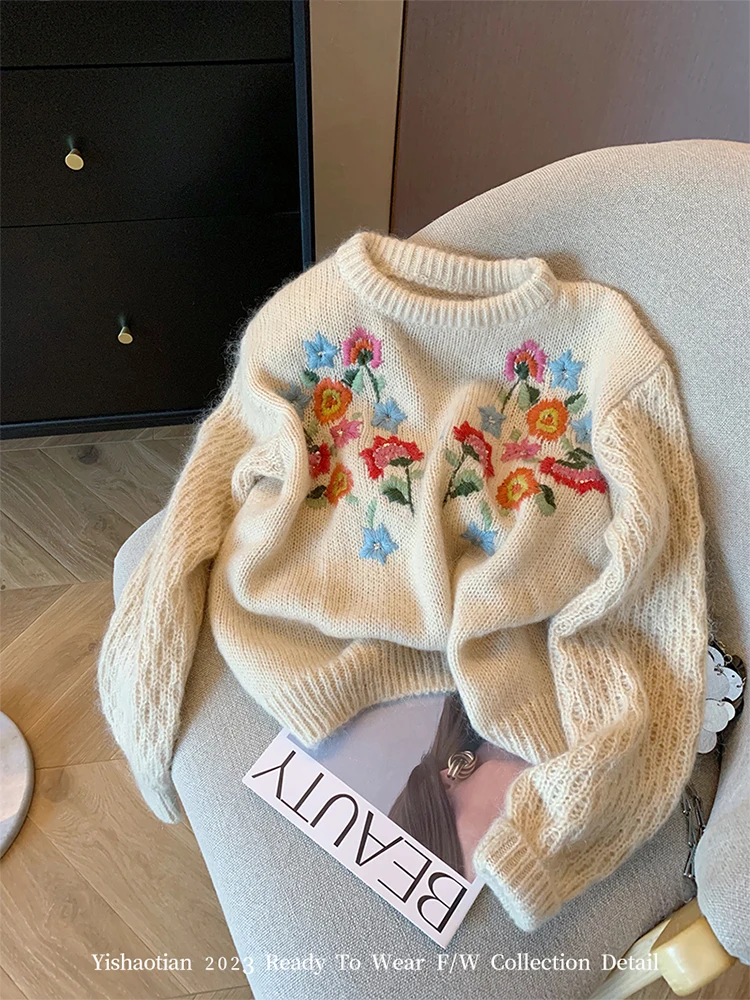
Recycled options provide excellent alternatives for environmentally-conscious consumers seeking the warmth and comfort of cashmere cardigans with a smaller ecological footprint.
Sustainable Cashmere Blends
Thoughtfully created cashmere blends can enhance sustainability while maintaining luxury:
Strategic blending reduces the total amount of cashmere needed while maintaining warmth and softness.
The most sustainable companion fibers include organic cotton, Tencel (lyocell), and responsibly-produced wool, each with their own environmental advantages.
Performance benefits often include improved durability, better moisture management, and enhanced structure retention.
When evaluating blended products, look for transparent disclosure of all fiber sources and their respective certifications.
Well-designed blends offer excellent alternatives for specific needs, such as more structured garments or pieces intended for active use.
Cashmere Wrap Sweaters, Women's Cashmere Pullovers
$75.89 Select options This product has multiple variants. The options may be chosen on the product pageCashmere Cable Knit Sweaters, Women's Cashmere Pullovers
Price range: $111.82 through $112.93 Select options This product has multiple variants. The options may be chosen on the product page- Price range: $171.47 through $181.33 Select options This product has multiple variants. The options may be chosen on the product page
Cropped Cashmere Sweaters, Women's Cashmere Pullovers
$155.77 Select options This product has multiple variants. The options may be chosen on the product page- Price range: $87.29 through $91.47 Select options This product has multiple variants. The options may be chosen on the product page
- Price range: $102.02 through $109.37 Select options This product has multiple variants. The options may be chosen on the product page
Caring for Your Cashmere: Extending Garment Life for Sustainability
Proper care dramatically extends the life of your cashmere investment:
Hand wash using tepid water and mild detergent specifically formulated for wool and cashmere, gently squeezing rather than rubbing or wringing.
If machine washing, use a dedicated wool cycle with cold water and place garments in mesh bags to prevent stretching or damage.
Always dry cashmere flat on a clean towel away from direct sunlight or heat sources, gently reshaping while damp.
Store cleaned garments folded (never hung) in breathable cotton bags or acid-free tissue with cedar blocks to deter moths.
Address pilling by carefully removing pills with a cashmere comb or battery-operated fabric shaver on the lowest setting.
Treat small holes or damage immediately, either learning simple darning techniques or seeking professional repair.
The most sustainable garment is one you already own—proper care ensures your cashmere pieces remain beautiful and functional for many years.
Estate Cloth’s cashmere vests and other premium cashmere garments maintain their beauty significantly longer with these proper care techniques.
Making an Informed Decision: Questions to Ask Before Purchasing
Q: Where and how is the cashmere sourced?
A: Look for specific information about herding practices, grazing management, and regional sourcing rather than vague references to quality.
Q: What animal welfare standards are in place?
A: Responsible brands can explain specific practices regarding combing techniques, veterinary care, and living conditions for their cashmere goats.
Q: How is environmental impact minimized throughout production?
A: Expect details about grazing management, water conservation in processing, dyeing methods, and waste reduction initiatives.
Q: Which certifications do your products carry?
A: Beyond naming certifications, brands should explain why they chose these specific standards and what aspects of production they verify.
Q: How do you ensure fair labor practices throughout your supply chain?
A: Ethical producers will share information about worker compensation, safety standards, and community support initiatives.
Be wary if you receive vague responses, excessive technical jargon that obscures rather than clarifies, or if the focus shifts entirely to the luxury aspect without addressing sustainability questions.
Is Eco-Friendly Cashmere Worth the Investment?
The value proposition of sustainable cashmere extends far beyond the price tag:
While eco-friendly options typically cost 15-30% more than conventional cashmere, this premium reflects real investments in responsible practices rather than simply marketing hype.
The environmental benefits include preserved grasslands, reduced water pollution, lower chemical usage, and decreased carbon emissions—impacts that affect global ecosystems.
Ethical benefits include improved animal welfare, fair compensation for workers, and support for traditional communities and their cultural heritage.
Quality advantages typically include longer-lasting garments with better appearance retention, providing greater long-term value despite the higher initial cost.
As consumer demand for sustainable options grows, production efficiencies are increasing and more brands are entering this market segment, gradually making responsible cashmere more accessible to a wider range of consumers.
When viewed as heirloom-quality pieces to be enjoyed for many years and potentially passed down to future generations, sustainable cashmere represents not just a purchase but an investment in both personal enjoyment and planetary well-being.
Frequently Asked Questions About Sustainable Cashmere
Can cashmere ever be truly sustainable?
While no animal fiber is impact-free, responsible cashmere production can be significantly more sustainable than conventional methods and can actually help restore grasslands when properly managed.
How much should I expect to pay for eco-friendly cashmere?
Quality sustainable cashmere typically starts around $250 for basic items like scarves and can range to $500+ for sweaters and cardigans, reflecting the true cost of responsible production.
Are blended cashmere products less sustainable?
Not necessarily—thoughtfully designed blends can reduce overall cashmere consumption while maintaining quality and extending garment life, especially for items that undergo more stress during wear.
How can I verify a brand’s sustainability claims myself?
Look for specific certifications, detailed supply chain information, and transparent production descriptions. Don’t hesitate to ask direct questions about practices that matter to you.
Does sustainable cashmere feel different from conventional cashmere?
Properly produced sustainable cashmere typically feels equally soft or even softer than conventional options, as healthy animals living in good conditions naturally produce higher-quality fibers.

